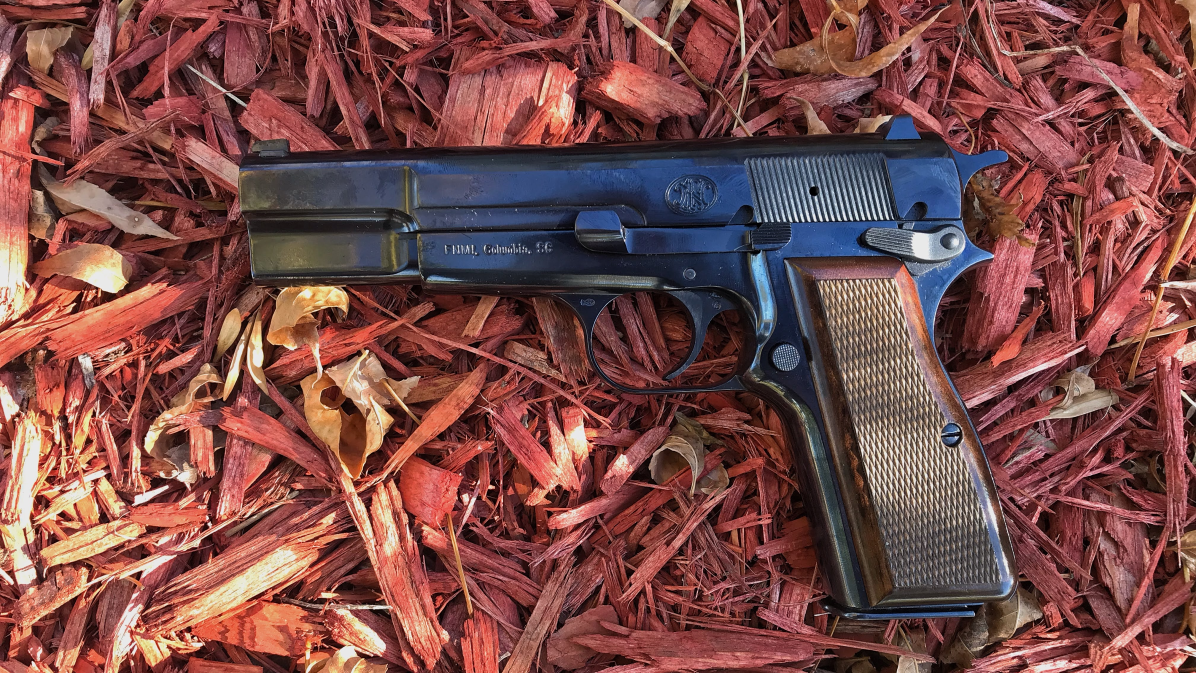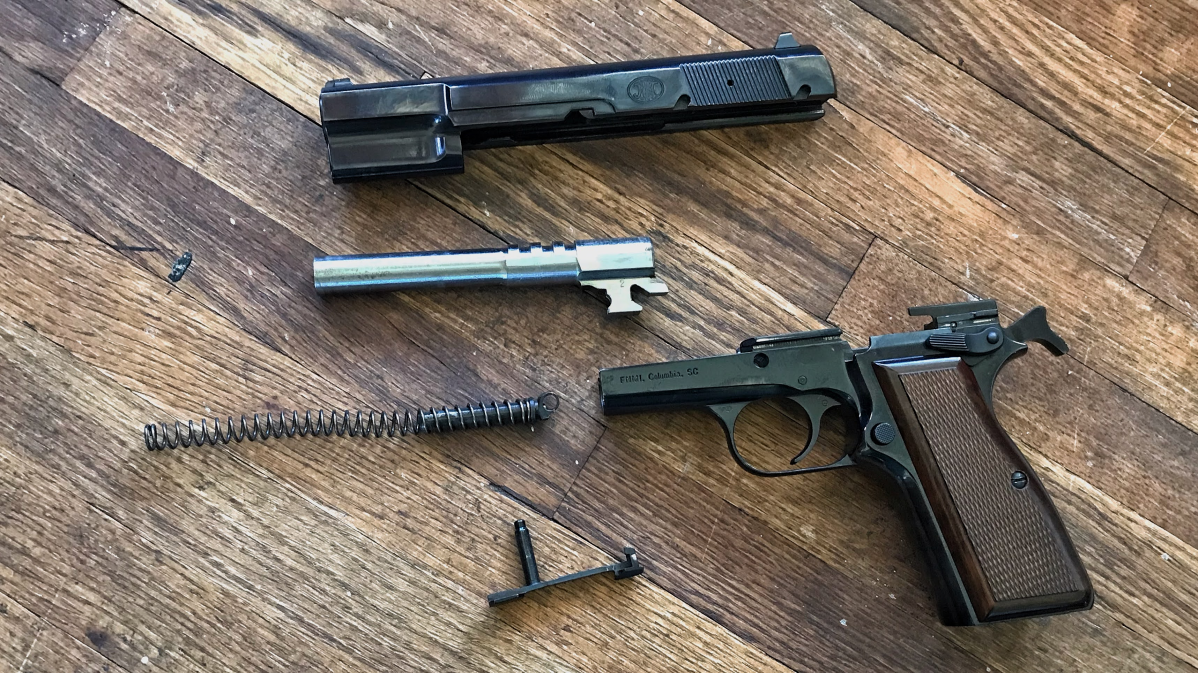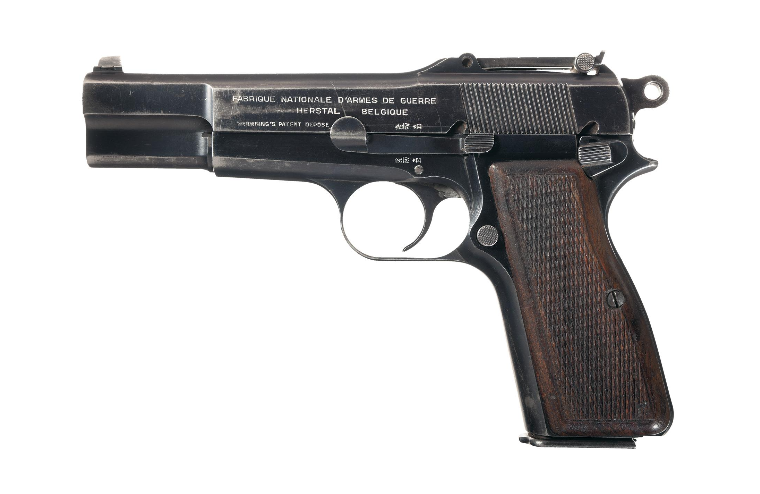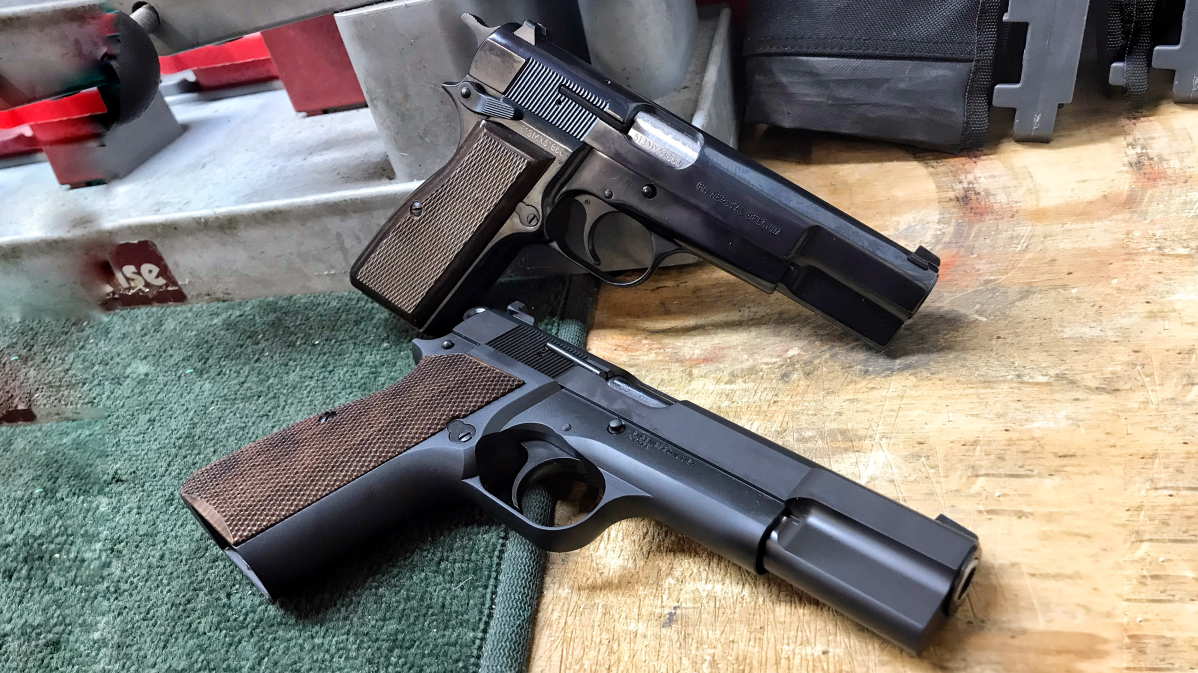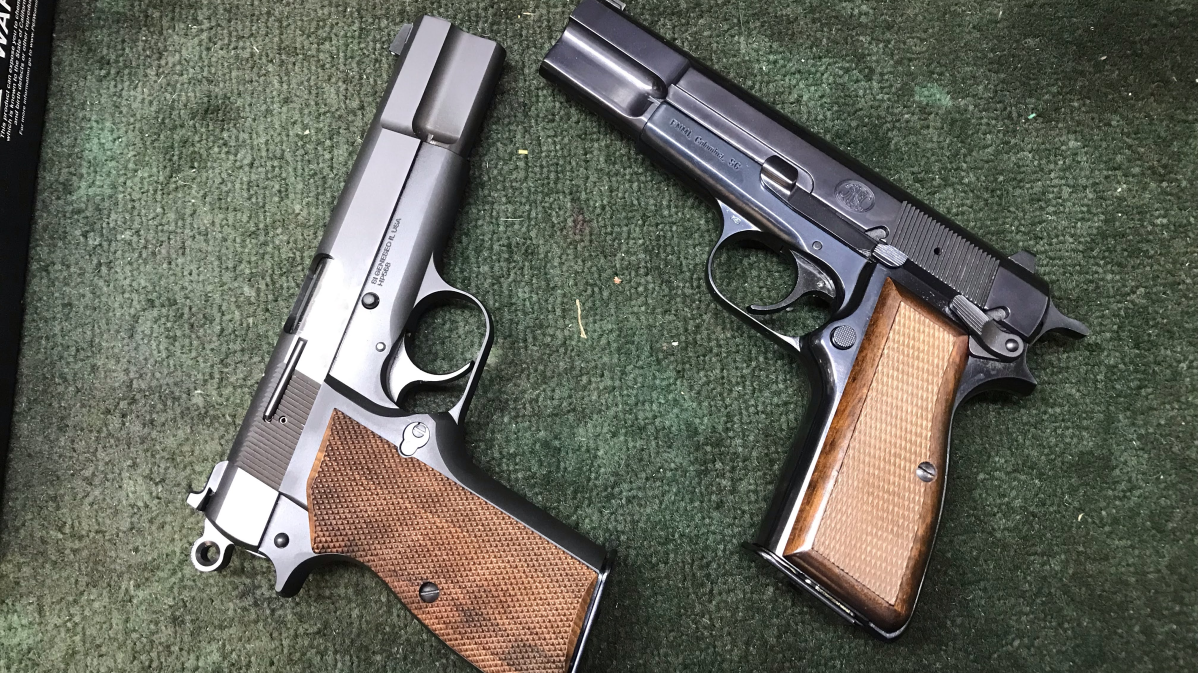Curious Relics #041: His Last Pistol – The Browning Hi-Power
Sam.S 06.15.22
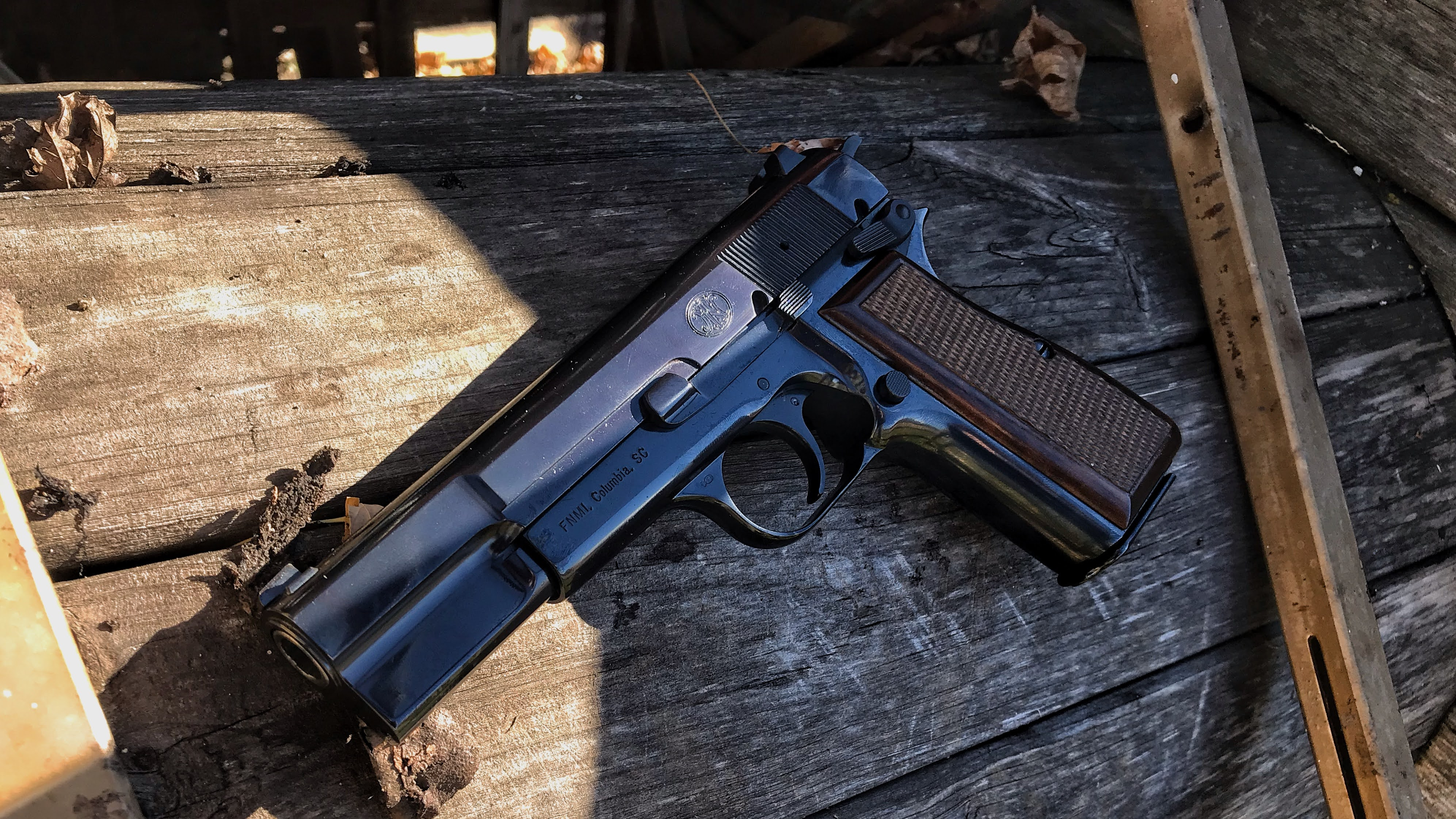
Welcome, if you are a newcomer to this fun bi-weekly segment of AllOutdoor.com! Last time around we covered a well-regarded Colt revolver, the Colt Police Positive Special. We started out with Part One, Part Two, and Part Three all of which covered history, variations, specifications, range time, and aftermarket parts. Today we get to run through pistol that has so much love, respect, and mythology even, the Browning Hi-Power. This pistol has such a large vat of information and the scope of it is a very daunting exploration. The Browning Hi-Power is much regarded as John Moses Browning’s last pistol design and it goes by many names and has been reproduced and cloned ever since its introduction. There is a very good reason for such a long-lasting love for this pistol and I am excited to jump down the rabbit hole. Let’s dive right into the Browning Hi-Power!
Note: Many photos used throughout the next three parts or so will be of my personal FN Hi-Power made in the 1990s and chambered for 40 S&W and also the new Springfield Armory SA-35.
Welcome to our recurring series of “Curious Relics.” Here, we want to share all of our experiences, knowledge, misadventures, and passion for older firearms that one might categorize as a Curio & Relic – any firearm that is at least 50 years old according to the ATF. Hopefully along the way you can garner a greater appreciation for older firearms like we do, and simultaneously you can teach us things as well through sharing your own expertise and thoughts in the Comments. Understanding the firearms of old, their importance, and their development which lead to many of the arms we now cherish today is incredibly fascinating and we hope you enjoy what we have to share, too!
History Abridged: Browning Hi-Power
To many, one of the world’s greatest and most beloved handguns ever produced made its way into consumer, military, and police hands in the 1911. Colt may have produced it, but it was not their invention. John Moses Browning is one of the highest regarded firearms innovators and inventors in history. He made fantastic strides in firearms technology all while usually being under time constraints of the government, scrutiny of manufacturers, and bias by consumers. Almost every modern firearm design out there has a piece of John Moses Browning’s mind locked away inside it. His final pistol design, the P35, a design he would never see finished would become one of the most widely used handguns of all time.
Starting out in 1921, the French government sought a new military sidearm. The initial requirements of the sidearm were that it must have a minimum of 10 rounds of ammunition in the magazine, be chambered for the 9mm Parabellum cartridge, and be simple to make and disassemble. Later they would ask for things like a magazine disconnect safety and the ability to engage targets at long ranges (typically jargon for adjustable sights). At the time John Moses Browning had many projects in mind but did pursue this one with the help of Dieudonné Joseph Saive, a close associate at Fabrique National.
The first order of business was exploring the idea of double-stacked magazines to keep the design compact. Allegedly Dieudonné Joseph Saive designed a double stack magazine in no time and retrofitted it to a current production Colt 380 pistol, although I could not find out which. Their initial workpiece was of a regular old straight blowback 380 ACP pistol but this was quickly scrapped due to the cartridge’s limitations in terms of lethality at range. a cool point of note is that this pistol used a striker mechanism rather than the eventual hammer it would end up with. Their next proof of concept example looked and operated very much like a 1911 but since the patents (now owned by Colt) had not yet expired things had to be drastically changed.
Around 1923 things really started to take shape for the Browning Hi-Power. At this point, it began to be referred to as Grande Puissance, which translated means “High Power” and later referred to as Grand Rendement (which translates to “High Yield”) by John Browning’s son Val. The 1911-related patents that Colt owned still had not run out at this point so innovation or at the very least necessity drove the changes necessary to keep the Hi-Power dream alive.
One of the biggest notes of change was to the barrel linking system. The one found in a Colt 1911 was robust but arguably a weak point, especially in earlier Colt/Browning handguns. The Colt 1911 barrel link system was scrapped and a new more robust and simpler fitting system was created. It goes by many names and is adopted as one of the most widely used systems in modern centerfire handguns. The link-less tilting barrel cam system was born. As mentioned, it was more robust due to locking lugs being on the barrel, fewer small parts, and greater reliability in terms of parts interchangeability. This system is also praised for its positive lockup which is supposed to improve accuracy because the barrel is locked longer in order for more gas to be expended down the barrel before it unlocks.
In late November of 1926, John Moses Browning was in Liege, Belgium working on the design of what would become the Hi-Power. He was at the FN factory and in his son Val’s office. John Browning began to have chest pains and walked back and forth in the office, swinging his arms hoping to help the pain, he eventually laid down while his son called for a doctor. In a book I had reviewed here on AllOutdoor entitled The Guns of John Moses Browning, the author writes:
“The doctor arrived, ‘stimulants were administered’ -family members say the physician gave Browning an injection-and the doctor ‘massaged his body.’ After a moment Browning looked up at Val and said, ‘Son, I wouldn’t be surprised if I am dying,’ and he did so a few moments later”.
GORENSTEIN, N. A. T. H. A. N. (2022). Chapter Eleven: The Sixty-Fourth or Sixty-Fifth Voyage. Page 225. The Guns of John Moses Browning: The remarkable story of the inventor whose firearms changed the world. essay, SCRIBNER.
John Moses Browning passed away in his son’s office due to heart failure. He was 71 years old, leaving behind a legacy that prevails to this day. The Hi-Power was his last handgun design and he never got to see it fulfilled. Thankfully John Moses Browning surrounded himself with wonderfully creative and like-minded individuals at the FN factory and Dieudonné Joseph Saive saw to the completion of the Hi-Power years later. In 1928 the patents held by Colt for many features on the Colt 1911 expired and the door was open for the Hi-Power to be further refined and tested. The Barrel bashing and tilting barrel/link system were transformed into the tough-as-nails link-less tilting barrel cam system. Dieudonné Joseph Saive finished off the design and initial Belgian contract guns looked very similar to the one in the photo below.
Lot 540: Fabrique Nationale 1935 Pistol 9 mm Luger. (n.d.). Rock Island Auction Company. photograph. Retrieved June 13, 2022, from https://www.rockislandauction.com/detail/56/540/fabrique-nationale-1935-pistol-9-mm-luger.
In 1935 the real deal Hi-Power was born and produced. It was called the P35 or P-35 since it was both a pistol and made in 1935…creative I know. As time rolled on it gained popularity and when world War Two hit Belgium and the FN factory was captured by the Germans, the Hi-Power pistols would be used by the Axis forces. Some Allied forces retrieved and very much liked the Hi-Power but it was reportedly more so used by the Germans. Post World War Two, FN resumed manufacturing for the world at large. With the NATO adoption of 9x19mm (9mm Parabellum), the only “high capacity” quality 9mm in the world was the P35. For this fact countries around the world started to adopt and buy up tons of these and even license and produce them elsewhere. Large buyers of the Hi-Power were adopters such as Canada and Australia. Eventually, more than 70 countries and their military and police forces would adopt the Hi-Power as their trusted sidearm.
In more recent years the Hi-Power has gone through ups and downs. It was produced by FN until the late 1980s when it was assembled in Portugal in order to cut down on costs. Unfortunately in the 1990s, the Hi-Power sort of peeked its popularity and met its match with new metal frame double-stack handguns showing up such as some models from Smith and Wesson. The Hi-Power remained in production and slowly increased in price all the way up until Browning and FN officially discontinued it in 2017. The final shipments arrived in 2018. Many companies during and since have made their own clones of the Hi-power but the most notable of the bunch as of late would be the Springfield SA-35 introduced in 2021 and the reintroduction of the Hi-Power by FN in 2022 (marketed to be the improved Hi-Power).
End of Part One: Browning Hi-Power
The Hi-Power lived and died and somehow never died at the same time. The design itself is such a prolific staple in the world and its silhouette can be identified easily by any gun guru out there. The innovation put into the P35 by both John Moses Browning and Dieudonné Joseph Saive lives on more so in almost every modern-day mass-produced handgun design. John Moses Browning would be proud to see his Grande Puissance come to fruition in such a wonderful long-lasting way.
In closing, I hope our Curious Relics segment informed as well as entertained. This all was written in hopes of continued firearm appreciation and preservation. We did not just realize how guns were supposed to look and function. It was a long and tedious process that has shaped the world we live in. So, I put it to you! Is there a firearm out there that you feel does not get much notoriety? What should our next Curious Relics topic cover? As always, let us know all of your thoughts in the Comments below! We always appreciate your feedback.
